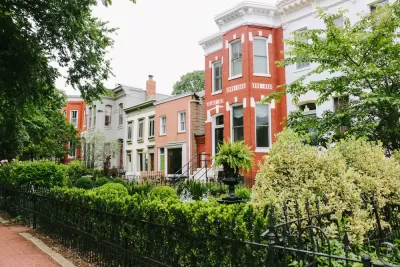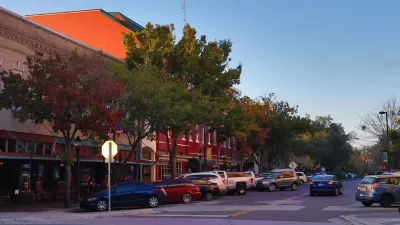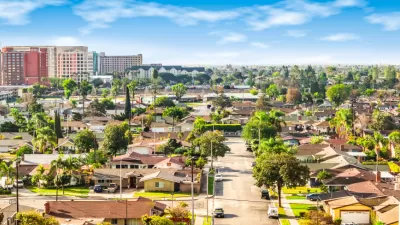Policies too narrowly focused on design can drive up the cost of construction and prevent the development of affordable housing.

Writing in Slate, Henry Grabar argues that the "battle between aesthetics and affordability" doesn't have to be a zero-sum game. "The promotion of good design in new buildings—distinct from the idea of preserving old ones—has become as much a local government objective as making sure every kid has a seat in school. Older American cities and suburbs are blanketed with zoning codes, historic districts, and design commissions that make sure communities that look nice stay looking nice."
But "a new wave of housing activists argues that this focus is a farce," a coy excuse to implement thinly veiled restrictive covenants that prevent socio-economic diversity and cause displacement of lower-income residents. "This status quo has preserved the shape of older places, but not the kinds of people who once lived there." Since the Great Recession, "we built the fewest new homes per capita of any period since World War II." The focus of historic preservation, Grabar argues, "has shifted from protecting the old to policing the new." Yet "it’s deeply human to care about what our surroundings look like," and YIMBYs must balance their interests with those of preservationists.
Zoning codes present another hurdle to increased density and affordable design. To streamline permitting and encourage construction, some cities are implementing pre-approval programs. "Los Angeles has staged a design competition for pre-approved ADU plans," and Bryan, Texas hopes to "jump-start the construction of 'missing middle housing'" through a concept they're calling "pattern zoning," which lets property owners download and customize one of four designs—"permit included."
Today, cities across the country are reckoning with the legacy of exclusionary zoning policies as "a tool of racial and socioeconomic exclusion, a relic that must be dismantled." Many have reduced or eliminated single-family zoning requirements in favor of denser development that city leaders hope will ease the affordability crisis faced by many households.
FULL STORY: “Good Design” Is Making Bad Cities, but It Doesn’t Have To

Planetizen Federal Action Tracker
A weekly monitor of how Trump’s orders and actions are impacting planners and planning in America.

Congressman Proposes Bill to Rename DC Metro “Trump Train”
The Make Autorail Great Again Act would withhold federal funding to the system until the Washington Metropolitan Area Transit Authority (WMATA), rebrands as the Washington Metropolitan Authority for Greater Access (WMAGA).

DARTSpace Platform Streamlines Dallas TOD Application Process
The Dallas transit agency hopes a shorter permitting timeline will boost transit-oriented development around rail stations.

Supreme Court Ruling in Pipeline Case Guts Federal Environmental Law
The decision limits the scope of a federal law that mandates extensive environmental impact reviews of energy, infrastructure, and transportation projects.

Texas State Bills to Defund Dallas Transit Die
DART would have seen a 30% service cut, $230M annual losses had the bills survived.

Bikeshare for the Win: Team Pedals to London Cricket Match, Beats Rivals Stuck in Traffic
While their opponents sat in gridlock, England's national cricket team hopped Lime bikes, riding to a 3-0 victory.
Urban Design for Planners 1: Software Tools
This six-course series explores essential urban design concepts using open source software and equips planners with the tools they need to participate fully in the urban design process.
Planning for Universal Design
Learn the tools for implementing Universal Design in planning regulations.
Roanoke Valley-Alleghany Regional Commission
City of Mt Shasta
City of Camden Redevelopment Agency
City of Astoria
Transportation Research & Education Center (TREC) at Portland State University
US High Speed Rail Association
City of Camden Redevelopment Agency
Municipality of Princeton (NJ)





























